Showing Spotlights 985 - 992 of 2783 in category All (newest first):
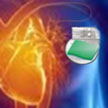 Adding to the options for wirelessly powering implants from outside the body, researchers are proposing a light-driven powering device using near infrared rays (nIR). Flashing light impulses, which are absorbed by the device, induce temperature fluctuation, thus generating voltage/current pulses which can be used for charging a battery or biological stimulations. This flexible and compact device can generate electrical pulses with controllable amplitude and width when remotely irradiated by nIR. Not only can it supply power to implantable bioelectronics, but it also provides adjustable electrical pulses for nerve stimulation.
Adding to the options for wirelessly powering implants from outside the body, researchers are proposing a light-driven powering device using near infrared rays (nIR). Flashing light impulses, which are absorbed by the device, induce temperature fluctuation, thus generating voltage/current pulses which can be used for charging a battery or biological stimulations. This flexible and compact device can generate electrical pulses with controllable amplitude and width when remotely irradiated by nIR. Not only can it supply power to implantable bioelectronics, but it also provides adjustable electrical pulses for nerve stimulation.
Nov 6th, 2015
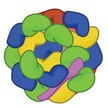 Previous reports have shown that when nanoparticles enter the blood stream, the proteins that adsorb onto nanoparticles when they enter the body form a protein corona that hinders interactions between the targeting ligands on the nanoparticles and their binding partners on the cells' surface. To address this issue, scientists have developed a strategy that enables directing the formation of protein coronas on nanoparticles that are enriched in plasma proteins with natural targeting capabilities.
Previous reports have shown that when nanoparticles enter the blood stream, the proteins that adsorb onto nanoparticles when they enter the body form a protein corona that hinders interactions between the targeting ligands on the nanoparticles and their binding partners on the cells' surface. To address this issue, scientists have developed a strategy that enables directing the formation of protein coronas on nanoparticles that are enriched in plasma proteins with natural targeting capabilities.
Oct 28th, 2015
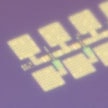 Rollable displays and other flexible, stretchable electronic systems are often enabled by the successful integration of nanostructured materials. Most commercially available flexible electronic circuits and devices are fabricated on flexible plastic substrates, such as polymeric amides, PEEK polymers, or transparent conductive polyester films. Although these substrates can be easily bent and rolled up, they cannot be used to fabricate rollable display-integrated gadgets that are fixed at a rigid perpendicular position on their own. To overcome this issue, researchers have now used a reversibly bistable material to demonstrate flexible electronics.
Rollable displays and other flexible, stretchable electronic systems are often enabled by the successful integration of nanostructured materials. Most commercially available flexible electronic circuits and devices are fabricated on flexible plastic substrates, such as polymeric amides, PEEK polymers, or transparent conductive polyester films. Although these substrates can be easily bent and rolled up, they cannot be used to fabricate rollable display-integrated gadgets that are fixed at a rigid perpendicular position on their own. To overcome this issue, researchers have now used a reversibly bistable material to demonstrate flexible electronics.
Oct 26th, 2015
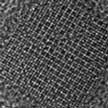 Ever since the first cadmium selenide quantum dot-based light-emitting devices (QLEDs) were reported in 1994, the dominant materials for QLEDs investigated since then have been limited to wurtzite or zinc blende Cd-based QDs. Similarly, the best developed and studied colloidal QD lasers have been fabricated from Cd-based semiconductors. Now, researchers have presented a new family of photoelectric materials for light-emitting devices: colloidal all-inorganic perovskite cesium lead halide QDs. This new material could find applications in LEDs and lasers, and has an especially big potential in high-performance displays, lighting, monochromatic narrow-band photodetectors, and optical communications.
Ever since the first cadmium selenide quantum dot-based light-emitting devices (QLEDs) were reported in 1994, the dominant materials for QLEDs investigated since then have been limited to wurtzite or zinc blende Cd-based QDs. Similarly, the best developed and studied colloidal QD lasers have been fabricated from Cd-based semiconductors. Now, researchers have presented a new family of photoelectric materials for light-emitting devices: colloidal all-inorganic perovskite cesium lead halide QDs. This new material could find applications in LEDs and lasers, and has an especially big potential in high-performance displays, lighting, monochromatic narrow-band photodetectors, and optical communications.
Oct 22nd, 2015
 Compared to the conventional inefficient incandescent and fluorescent lighting technologies, LED light bulbs can, in principle, operate at an efficiency level of 100%. The current LED lighting technology, however, is not even close to reaching this limit. This is due to several problems which, however, can be by and large solved by employing tunnel junction integration into current nanowire LED structures. Demonstrating this, researchers have developed tunnel junction nanowire LEDs that can eliminate the use of resistive p-GaN contact layers, leading to reduced voltage loss and enhanced hole injection.
Compared to the conventional inefficient incandescent and fluorescent lighting technologies, LED light bulbs can, in principle, operate at an efficiency level of 100%. The current LED lighting technology, however, is not even close to reaching this limit. This is due to several problems which, however, can be by and large solved by employing tunnel junction integration into current nanowire LED structures. Demonstrating this, researchers have developed tunnel junction nanowire LEDs that can eliminate the use of resistive p-GaN contact layers, leading to reduced voltage loss and enhanced hole injection.
Oct 15th, 2015
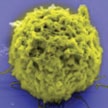 The complexity of the microenvironment of a biological cell is influenced by many factors, including surface topography and chemistry; matrix stiffness; mechanical stress; molecular liquid composition and other physiochemical parameters. However, most artificial biointerfaces are developed based on just a single chemical or physical factor to direct cell behaviors. The functions performed by these artificial biointerfaces are far simpler than those performed in the natural cell microenvironment. In an effort to more closely mimic a cell's natural environment, researchers have fabricated an antibody modified reduced graphene oxide platform and used it to significantly improve the efficiency for capturing circulating tumor cells.
The complexity of the microenvironment of a biological cell is influenced by many factors, including surface topography and chemistry; matrix stiffness; mechanical stress; molecular liquid composition and other physiochemical parameters. However, most artificial biointerfaces are developed based on just a single chemical or physical factor to direct cell behaviors. The functions performed by these artificial biointerfaces are far simpler than those performed in the natural cell microenvironment. In an effort to more closely mimic a cell's natural environment, researchers have fabricated an antibody modified reduced graphene oxide platform and used it to significantly improve the efficiency for capturing circulating tumor cells.
Oct 14th, 2015
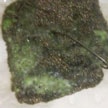 Given the huge economic incentives, corrosion prevention and protection is a major business. The advanced materials that are being developed and used in modern industries require increasingly sophisticated coatings for improved performance and durability. Take for example the case of microbially induced corrosion (MIC) - one of the lesser understood forms of corrosion where micro-organisms manifest metallic surfaces and induce substantial damage that often goes unnoticed until there is a loss in the component functionality. New research features graphene as a promising novel surface coating that can be used to minimize metallic corrosion under harsh microbial conditions.
Given the huge economic incentives, corrosion prevention and protection is a major business. The advanced materials that are being developed and used in modern industries require increasingly sophisticated coatings for improved performance and durability. Take for example the case of microbially induced corrosion (MIC) - one of the lesser understood forms of corrosion where micro-organisms manifest metallic surfaces and induce substantial damage that often goes unnoticed until there is a loss in the component functionality. New research features graphene as a promising novel surface coating that can be used to minimize metallic corrosion under harsh microbial conditions.
Oct 13th, 2015
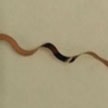 The age of wearable electronics is upon us as witnessed by the fast growing array of smart watches, fitness bands and other advanced, next-generation health monitoring devices such as electronic stick-on tattoos. In order for these wearable sensor devices to become fully integrated into sophisticated monitoring systems, they require wireless interfaces to external communication devices such as smartphones. This requires far-field communication systems that, like the sensor systems, perform even under extreme deformations and during extended periods of normal daily activities.
The age of wearable electronics is upon us as witnessed by the fast growing array of smart watches, fitness bands and other advanced, next-generation health monitoring devices such as electronic stick-on tattoos. In order for these wearable sensor devices to become fully integrated into sophisticated monitoring systems, they require wireless interfaces to external communication devices such as smartphones. This requires far-field communication systems that, like the sensor systems, perform even under extreme deformations and during extended periods of normal daily activities.
Oct 9th, 2015
 Adding to the options for wirelessly powering implants from outside the body, researchers are proposing a light-driven powering device using near infrared rays (nIR). Flashing light impulses, which are absorbed by the device, induce temperature fluctuation, thus generating voltage/current pulses which can be used for charging a battery or biological stimulations. This flexible and compact device can generate electrical pulses with controllable amplitude and width when remotely irradiated by nIR. Not only can it supply power to implantable bioelectronics, but it also provides adjustable electrical pulses for nerve stimulation.
Adding to the options for wirelessly powering implants from outside the body, researchers are proposing a light-driven powering device using near infrared rays (nIR). Flashing light impulses, which are absorbed by the device, induce temperature fluctuation, thus generating voltage/current pulses which can be used for charging a battery or biological stimulations. This flexible and compact device can generate electrical pulses with controllable amplitude and width when remotely irradiated by nIR. Not only can it supply power to implantable bioelectronics, but it also provides adjustable electrical pulses for nerve stimulation.
 Subscribe to our Nanotechnology Spotlight feed
Subscribe to our Nanotechnology Spotlight feed





